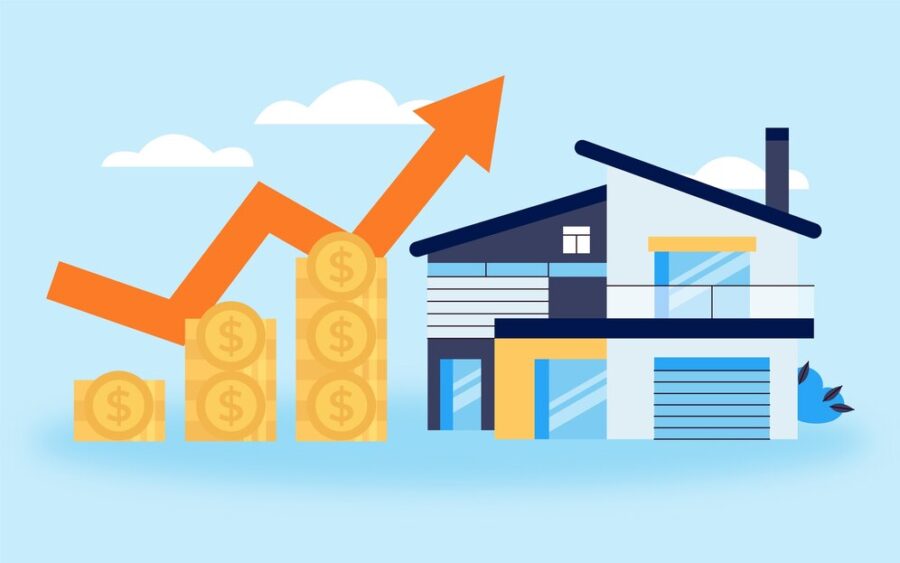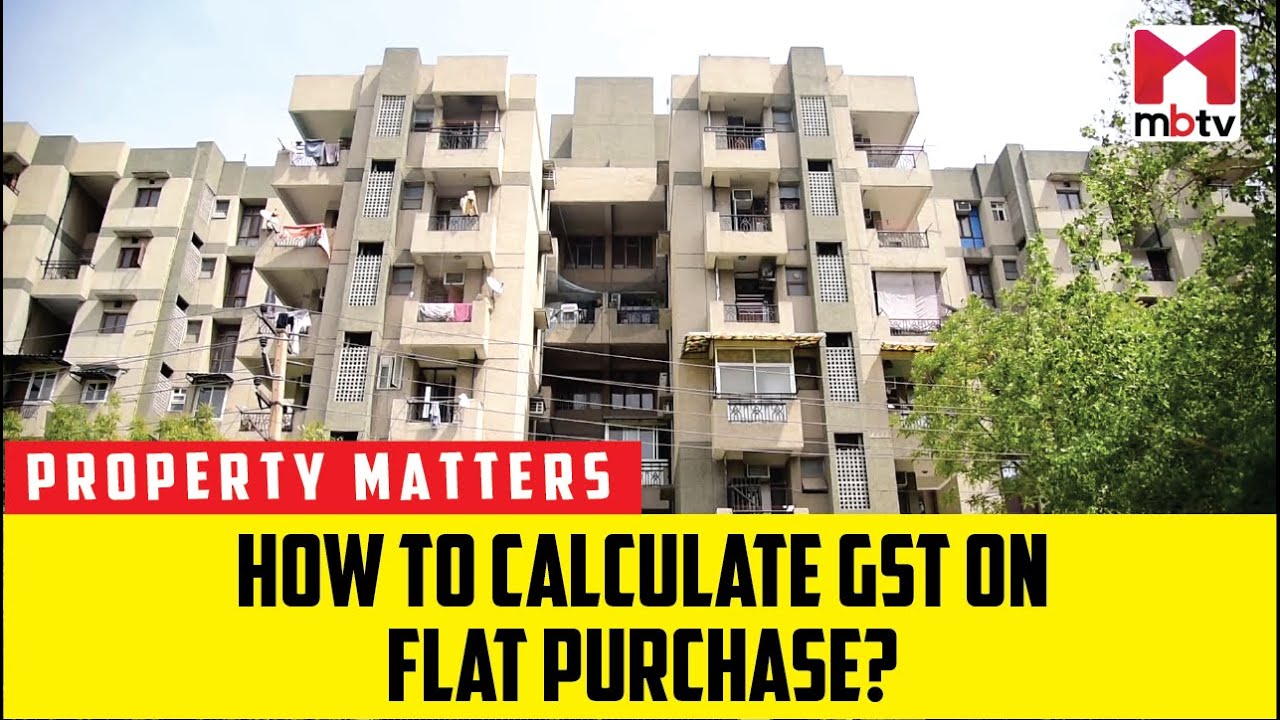Revised GST on Affordable Housing
- 12 Aug 24
- 19 mins

Revised GST on Affordable Housing
Key Takeaways
- GST simplifies taxes, boosts the economy, and levels the playing field for businesses.
- Affordable homes target homes for low- to moderate-income families within specific cost criteria.
- Current GST rates are 1% for affordable housing and 5% for non-affordable homes without ITC.
- Eligibility for lower GST rates includes project location, carpet area, and buyer income criteria.
- Since April 2019, GST rates have been lowered to encourage investment in affordable housing.
- 1% GST rate conditions require projects to meet specific compliance and transparency criteria.
GST, or Goods and Service Tax, is a comprehensive value-added tax that covers all services and manufacturing platforms at the national level.
What is GST, and what is its purpose?
The GST implementation will take on the challenge of replacing a host of indirect tax regimes with a standalone tax structure, the impact of which can best be seen in countries such as India, a prominent example of GST adoption.
The main objective of GST is to unify the existing assortment of taxes into one and to make the indirect taxation system easier and more comprehensible to businesses and the government administration as well. By doing this, GST brings about the following key benefits:
- Elimination of Tax-on-Tax (Cascading Effect): GST is a destination-based tax, meaning it is collected from the point of consumption rather than the point of origin, like traditional sales taxes. This system eliminates the cascading effect of taxes, where taxes are levied on an already taxed amount, thereby reducing the overall tax burden on the final consumer.
- Increased Efficiency: By merging multiple indirect taxes into one, GST reduces the compliance burden on businesses. Companies no longer need to navigate through various tax laws and regulations, which in turn reduces the cost and effort of compliance.
- Boost to the Economy: By making the tax system more transparent and business-friendly, GST encourages foreign investment and potentially boosts economic growth. It also aims to widen the tax base, increasing government revenues in the long term.
- Improved Competitiveness: GST levels the playing field for businesses by ensuring that the tax structure is uniform across the country. This uniformity helps to increase the competitiveness of domestic goods and services in the international market.
- Transparent and Easy to Administer: GST's structure is designed to be transparent and easy for both businesses and the government to administer. With the help of technology, GST filing and compliance have been made online, making the process quicker and more efficient.
What is affordable housing?
Affordable housing refers to ready-home units that are economically accessible to individuals and families with low to moderate incomes. It is designed to address the needs of those who find it difficult to afford homes due to the disparity between their income and the market prices of homes in non-metropolitan cities and metropolitan cities.
The criteria for what constitutes 'affordable housing' can vary significantly across different countries and regions, often based on local economic conditions, median incomes, and market prices.

Generally, it is considered affordable if the cost does not exceed a certain percentage of a household's income, with thresholds commonly set around 30% to 35%. This benchmark ensures that families have sufficient funds remaining to cover food, healthcare, transportation, education, and other necessities.
Affordable Housing Program & Purpose
Affordable housing programs may involve a variety of strategies, including government subsidies, incentives for private sector developers to build lower-cost homes, public buildings projects, and financial assistance to home buyers.
The objective of these programs is to enhance the availability of affordable housing in the community by augmenting the supply, decreasing the cost of habitation, and extending financial assistance to individuals who require it.
In addition to providing safety, affordable housing contributes to economic diversity and community stability, improves the quality of life for families and individuals, and fosters social inclusion. Communities and governments can reduce social inequalities and promote a more prosperous and equitable society by guaranteeing affordable and adequate accommodation for all individuals.
Current GST Rates for Affordable Housing
Initially, the GST rates for budget housing were pegged at a standard rate, but recognizing the need to make buildings more affordable, the government revised these rates to cater specifically to budget homes projects.
As of my last update in April 2023, in countries like India where GST has been implemented, the government has made significant changes to the GST rates applicable to budget or affordable housing to support its vision of "Homes for All." These changes are part of broader fiscal policies intended to stimulate the real estate sector and make homeownership more attainable for everyone.
For instance, the Indian government reduced the GST rate on under-construction affordable housing properties to 1% without input tax credit (ITC), and for non-affordable housing, the rate was set at 5% without ITC.
These rates were significantly lower than the previous GST rates, which were 8% for affordable housing with ITC and 12% for non-affordable housing with ITC.
It's important to note that the reduced rates apply only to residential properties and are contingent upon meeting certain criteria defined for affordable housing. These criteria typically include aspects like the carpet area of the units and the cost of the property, which are set to ensure that the benefits of reduced rates are targeted towards the intended economic segments.
Additionally, for the purchase of completed properties that have received a completion certificate, no GST is applied, making ready-to-move-in homes attractive for buyers, albeit without the benefits of reduced GST rates that apply to under-construction projects. The rationale behind offering concessional GST rates for budget housing is to reduce the overall cost burden on buyers within the affordable housing segment, thereby encouraging demand for such properties.
By reducing the cost of properties, this fiscal measure not only facilitates progress and investment in the real estate industry but also supports job growth and development, which are both advantageous for prospective homeowners.
GST Rates Currently in Effect
As of the current fiscal year, the GST rate on affordable housing, which is 1%, has been significantly reduced to make it more accessible to the average buyer.
The Current GST Framework
The Goods and Services Tax (GST) rates currently in effect have undergone various revisions since the tax system's inception, aiming to make goods and services more affordable and to simplify the tax structure for businesses and consumers alike.

The GST council periodically reviews these rates to ensure they reflect the changing economic landscape and policy objectives.
GST Rates for Homes and Real Estate
In the context of affordable homes and real estate, particularly for budget and affordable housing projects, the GST rates have been specifically tailored to encourage investment in this sector and make affordable housing flats more accessible to the general populace. As of the latest updates, the GST rates for real estate are structured as follows:
- Affordable housing projects enjoy a concessional GST rate, which is 1% significantly lower than the standard rates applied to other goods and services. This concession is part of the government's initiative to promote affordable housing for all segments of society.
- Under-construction properties that do not fall under the affordable housing category are subject to a different GST rate, i.e., 5%, which is higher than that for affordable housing but includes certain rebates and exemptions on input tax credits to ease the financial burden on buyers.
Notably, these rates are subject to modification in accordance with the GST council's determinations, which reflect variations in government policy and economic tactics.
Impact of GST on Homebuyers
The introduction of these GST rates has significantly influenced individuals seeking to purchase a property, with a particular advantage for those interested in affordable housing. By reducing the overall tax burden on affordable housing, the GST regime has made it more feasible for lower and middle-income families to own a home.
Additionally, the clarity and simplification of tax rates in the real estate sector have improved transparency, making it easier for buyers to understand and manage their finances when purchasing a property.
Eligibility Criteria for Availing Affordable Housing GST Rates
To promote affordable housing, governments have offered concessional Goods and Services Tax (GST) rates to developers and buyers within this segment.
However, availing of these beneficial rates is contingent upon meeting certain eligibility criteria, which are designed to ensure that the benefits are directed towards the intended demographic: individuals and families in need of affordable housing solutions.
Key Criteria for Projects
- Carpet Area Limits: One of the primary criteria for a real estate project to be considered under the affordable housing GST rates is the carpet area. This area differs based on the location of the project, with specific distinctions made between metropolitan and non-metropolitan areas to account for variations in living standards and homes needs.
- Pricing Cap: There is often a maximum selling price defined for affordable housing units to ensure they remain accessible to the target demographic. This cap also varies by region, reflecting the diverse economic landscapes across different areas.
Criteria for Buyers
- Income Threshold: Potential buyers may need to fall under certain income thresholds to qualify for purchasing homes with concessional GST rates. These thresholds are periodically reviewed and adjusted to align with economic conditions and inflation.
- First-Time Homebuyer Status: In some cases, eligibility for these reduced GST rates might be restricted to first-time homebuyers, aiming to support individuals and families purchasing their first home.
Additional Considerations
- Developer Compliance: Developers must also comply with specific regulations and documentation requirements to offer their projects under the concessional GST regime. This includes adherence to construction standards, project completion timelines, and regulatory approvals.
- Certification: Some jurisdictions require projects to be certified as affordable housing projects by relevant authorities to avail of the concessional GST rates. This certification process ensures that only qualifying projects benefit from reduced rates.
Benefits of Affordable Housing GST Rates
The reduced GST rates on affordable homes come with several benefits, including a lower cost of acquisition for the buyer and increased demand in the real estate sector. The most significant contribution to promoting economically feasible construction projects has been the implementation of concessional rates of the Goods and Services Tax (GST) on affordable housing.

These rates promote the financial feasibility of investments and construction of more affordable housing units by developers and builders through the reduction of their tax burden. This stimulates the real estate industry to prioritize housing
Reducing Cost for Homebuyers
- Lower Acquisition Costs: One of the most direct benefits of reduced GST rates for affordable housing is the decreased cost of acquiring a home for buyers. With a lower tax rate, the overall purchase price of affordable housing units drops, making homeownership more attainable for a larger segment of the population.
- Increased Savings: Buyers of affordable housing units benefit from significant savings on the tax front, which can then be utilized for other essential expenses or investments. This financial relief is particularly impactful for first-time homebuyers and those with limited budgets.
Enhancing Market Accessibility
- Broader Accessibility: Concessional GST rates broaden the accessibility of the real estate market, inviting more potential buyers into the fold. This democratization of property ownership not only fulfills the basic need for shelter but also promotes social stability and economic diversity.
- Incentivizing First-Time Buyers: Reduced GST rates serve as an incentive for first-time homebuyers, who might otherwise be hesitant or financially unable to enter the real estate market. This support can kickstart the journey towards homeownership for many, contributing to their long-term financial security and stability.
Supporting Economic and Social Objectives
Economic Stimulus: By making houses more affordable, these GST rates contribute to the broader economic objective of stimulating growth in the real estate sector and related industries. Increased consumer expenditure, job growth, and overall economic vitality can result from the development and sale of more affordable housing.
Social Inclusion: Affordable housing initiatives, supported by favorable GST rates, play a crucial role in promoting social inclusion. By ensuring that individuals and families from various socio-economic backgrounds have access to homes, societies can mitigate issues related to inequality and social stratification.
GST Rates for Affordable Housing as applicable as 1st April 2019
Effective April 1, 2019, the GST rates for affordable housing were further reduced, demonstrating the government's commitment to promoting affordable housing for all.
This change was aimed at bolstering the real estate sector, particularly the affordable housing segment, by making it more attractive for both developers and buyers.
New GST Rates and Their Implications
- Reduced Rate for Affordable Housing: The GST council approved a reduced GST rate for affordable housing projects, bringing it down to a much more conducive rate for stimulating growth in this sector. This decrease in price was intended to increase the affordability of housing for individuals with lower and middle incomes.
- Definition of Affordable Housing: For a project to be classified under the affordable housing category, it must meet certain criteria related to the carpet area and cost of the residential apartments. These criteria were clearly defined to ensure that the benefits of the reduced GST rates were extended to the intended beneficiaries.
Impact on Developers and Homebuyers
- Increased Developer Interest: The reduced GST rates encouraged more developers to undertake affordable housing projects, knowing that the lower tax burden could make these ventures more financially viable and appealing to a broader market segment.
- Cost Savings for Buyers: Homebuyers looking to invest in affordable housing options benefited significantly from the reduced GST rates. As a result of the direct cost savings generated by the reduced tax rate, the total investment required to own a property was diminished, which increased its affordability.
Broader Economic and Social Benefits
- Stimulating Demand: The introduction of lowered GST rates for affordable housing on April 1, 2019, played a crucial role in stimulating demand in the real estate market. By making homes more affordable, a larger segment of the population was able to consider homeownership, driving up demand and supporting the construction industry.
- Supporting the Homes for All Mission: This strategic move by the government supported its broader mission of providing homes for all by a specific target year. By making affordable housing more financially accessible, the revised GST rates are a step towards achieving the goal of ensuring that every citizen has access to safe and affordable housing.
The revision of GST rates for affordable housing as of April 1, 2019 represents a forward-thinking approach to addressing the critical need for affordable housing in the economy.
Conditions to be satisfied for the new GST rate of 1%
In an effort to boost affordable housing, certain governments have introduced a new Goods and Services Tax (GST) rate of 1% specifically designed for this sector.
This concessional rate aims to make homes more affordable for lower and middle-income groups by reducing the tax burden on affordable housing projects. However, both the developers and the projects must abide by certain requirements in order to receive this preferential rate.
Criteria for Affordable Housing Projects
- Project Size and Location Criteria: The concessional GST rate is applicable to projects that meet predefined size and location parameters. These parameters are set to ensure that the benefits are directed towards projects that genuinely contribute to the affordable housing sector.
- Carpet Area Limits: Affordable housing projects must adhere to specified carpet area limits for the units to qualify for the 1% GST rate. These limits are designed to ensure that the houses are appropriately sized for the target demographic of lower- and middle-income buyers.
- Pricing Thresholds: There is often a cap on the pricing of affordable housing units to ensure they remain within the financial reach of the intended buyers. Projects must comply with these pricing guidelines to be eligible for the reduced GST rate.
Developer Compliance Requirements
- Registration and Approval: Developers wishing to take advantage of the 1% GST rate must make sure their projects have received proper registration and approval from the appropriate authorities. This includes adherence to all regulatory guidelines and obtaining necessary clearances.
- Transparency and Disclosure: Developers are required to maintain transparency in their dealings and provide full disclosure regarding the project details, ensuring buyers are well-informed about the applicability of the concessional GST rates.
- Compliance with Homes Policies: Projects must align with national or regional affordable housing policies, demonstrating compliance with broader objectives of promoting homes affordability and accessibility.
Impact and Enforcement
- Monitoring and Compliance: Authorities closely monitor projects to ensure compliance with the conditions for the 1% GST rate. Regular audits and inspections may be conducted to prevent misuse of the concessional rate.
- Penalties for Non-Compliance: Developers found not adhering to the stipulated conditions risk penalties, including revocation of the concessional rate and imposition of standard GST rates retrospectively, along with fines.
Impact on Real Estate Industry
The introduction of favorable Goods and Services Tax (GST) rates for affordable housing has significantly impacted the real estate industry by enhancing the affordability of homes. This, in turn, has led to an increase in demand, particularly among middle- and lower-income groups, who previously found homeownership out of reach.

The reduced GST rates have made it financially easier for these groups to purchase homes, thereby broadening the customer base for the real estate sector and driving sales.
Stimulus for Affordable Housing Projects
The concessional GST rates have acted as a stimulus for the development of affordable homes projects. Real estate developers are now more inclined to invest in and undertake such projects, knowing that the lower tax burden improves the projects' economic viability and market attractiveness.
This shift in focus towards affordable housing is aligned with government initiatives aiming to provide houses for all, thereby contributing to the fulfillment of broader social and economic goals.
Impact on Real Estate Pricing
The adjustment in GST rates has also had a direct impact on real estate pricing. For affordable housing, the lower GST rates have contributed to a decrease in the overall cost of homes, making them more accessible to the target demographic. This price adjustment is crucial in markets where high costs have traditionally barred a significant portion of the population from owning homes.
Improved Cash Flow for Developers
Lower GST rates have increased the demand for affordable housing, which has helped developers' cash flow and financial stability. Faster sales and turnovers mean that developers can recoup their investments quicker and reinvest in new projects, thereby sustaining growth and development within the industry.
Competitive Market Dynamics
The real estate market has become more competitive due to the focus on affordable housing. Developers are motivated to innovate and offer better-quality homes at lower prices to attract buyers.
This competition not only benefits consumers but also drives the industry towards efficiency and sustainability.
Long-Term Industry Growth
The favorable GST rates for affordable housing are expected to contribute to the long-term growth of the real estate industry. By making homeownership more accessible, these rates help create a more stable and sustained demand for affordable houses.
Additionally, they support the development of ancillary industries such as construction materials, home furnishings, and financial services, further contributing to economic growth.
Conclusion
The implementation of reduced GST rates for affordable housing has had a profound and multifaceted impact on the real estate industry. By making homes more affordable and stimulating the development of affordable housing projects, these measures have not only supported the industry's growth but also contributed to the broader social objective of ensuring that more people have access to quality homes.
As the industry continues to adapt to these changes, the long-term benefits are expected to extend well beyond the immediate financial gains, fostering a more inclusive and equitable real estate market.
💡Start using Pice today to transform your GST management into a hassle-free experience and buy homes at an affordable rate under GST in India.


















